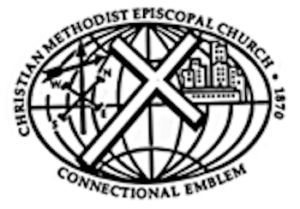
*The Christian Methodist Episcopal (CME) Church was founded on this date in 1870. They are a historically Black Denomination within the broader context of Wesleyan Methodism.
The CME Church was organized in Jackson, Tennessee, by 41 former slave members with the full support of their white sponsors in their former Methodist Episcopal Church, South, who met to form an organization that would allow them to establish and maintain their polity. Originally called the Colored Methodist Episcopal Church, they ordained their bishops and ministers without being officially endorsed or appointed by the white-dominated body. They called this fellowship the Colored Methodist Episcopal Church in America, which remained until their successors adopted the current name in 1954.
Today, the Christian Methodist Episcopal has a church membership of people from all racial backgrounds. It adheres to Wesleyan-Arminian theology. In the Christian Methodist Episcopal Church, bishops are the Chief Officers elected by "delegate" votes for life until the age of 74, when they must retire. Among their duties are appointing clergy to serve in local churches as pastors, performing ordinations, and safeguarding the doctrines and discipline of the church. The General Conference, held every four years, comprises an equal number of clergy and lay delegates and is when a bishop can be elected. In each Annual Conference, CME bishops serve for four-year terms. CME Church bishops may be male or female.
In 2006, there were an estimated 850,000 members in 3,500 churches. The CME Church has grown to more than 1.5 million members across the United States, with mission and sister churches in Haiti, Jamaica, and fourteen African nations. The Christian Methodist Episcopal Church's foundational doctrines are commonly referred to in Wesleyan Methodism as The Articles of Religion. The Articles of Religion were derived from the Church of England and abridged by John Wesley, Founder of Methodism, for Methodists in America in 1784.
Since the early 20th century, the CME Church has explored the possibility of merging with other African American Methodist churches similar in doctrine and practice. In 1918, representatives of the CME Church, the African Methodist Episcopal (AME) Church, and the African Methodist Episcopal Zion (AME Zion) Church met in Birmingham, Alabama, where they agreed to propose a merger. This "Birmingham Plan" by the CME General Conference did not win enough support in the annual conferences.
In the late 20th century, the CME Church engaged in new talks with the AME Zion Church on a merger. CME General Conference delegates approved a union in principle in 1986, and AME Zion delegates gave the same approval in 1988. Bishops of each church reopened the question in 1999, adopting a timeline for an eventual merger. In May 2012, The Christian Methodist Episcopal Church entered into full communion with the United Methodist Church, African Methodist Episcopal Zion Church, African Union Methodist Protestant Church, African Methodist Episcopal Church, and Union American Methodist Episcopal Church. These Churches agreed to "recognize each other's churches, share sacraments, and affirm their clergy and ministries."